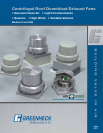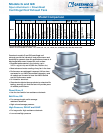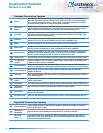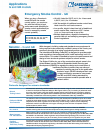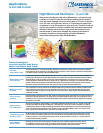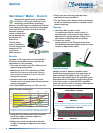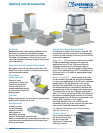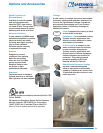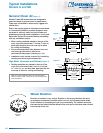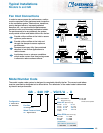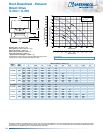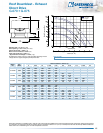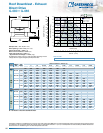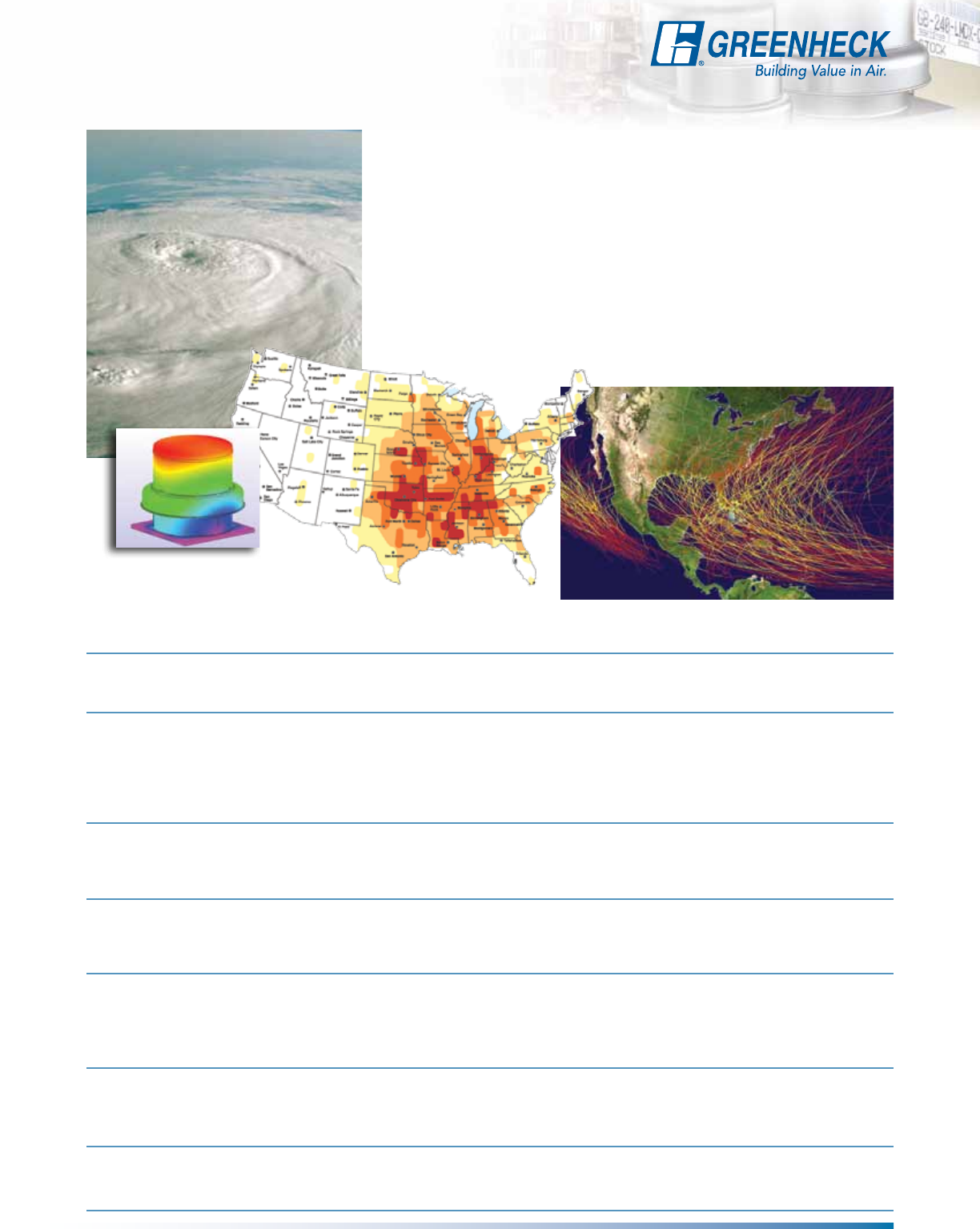
7
High Wind and Hurricane - G and GB
Greenheck is leading the High Wind Standard for roof top fans and
ventilators. Forceful winds and wind-borne debris are the cause of
most hurricane damage. Hurricane winds start at 75mph. At speeds
over 150mph, wind can exert a force of 75poundspersquarefoot
of pressure or over 900pounds on a fan and curb. Forceful winds are
not the only problem, wind-borne debris can also cause detrimental
effects to objects and structures. High winds and extreme forces
are the cause of most storm damage. By analyzing calculations,
computer simulations, actual testing, and other standards—
Greenheck developed the High Wind Standard.
Structural
Performance Load
A static load that is 1.5times the design load (91.5 pounds per square foot of pressure) is applied
both positively and negatively to simulate wind force loads in each direction. Structural Performance
per Dade County Protocol TAS-202 (ASTM-E330).
Miami-Dade County
Test Protocols
Greenheck worked with Miami-Dade County to outline a High Velocity Hurricane Zone standard for
rooftop fans. Greenheck model USGF was the first rooftop fan certified and approved by the Miami-
Dade Building Code Compliance office and Texas Department of Insurance for use in hurricane
zones. Models G and GB have been certified by an independent third party to the ASTM E-330 Static
Pressure Difference Standard, Florida Building Code Test Protocol TAS-201 (large missile impact),
202 (static pressure difference) and 203 (cyclic pressure) Static Pressure Difference.
Miami-Dade NOA
Numbers
The certifications can be viewed on the Miami-Dade County website under the NOA numbers listed
below. Models G and GB are the first downblast aluminum fans in the industry that have received
a Miami-Dade NOA for high wind (150 mph) and hurricane zones. Miami-Dade NOA 09-0624.09 for
models G and GB.
Florida Product
Approval
Florida Product Approval ensures that products which have been approved can be used anywhere in
the State of Florida which are not governed by the Miami-Dade County high wind regulations. More
information can be found on the Florida Building Code website. Florida Product Approval FL13225.1
for models G and GB
State Licensed
P.E. Calculations
Structural calculations performed by a licensed Professional Engineer (P.E.) on models G and GB
include Finite Element Analysis (FEA) and a stamped P.E. report of the fans compliance to ASCE
7-02 Minimum Design Loads for Buildings and Other Structures Standard and the Florida Building
Code. The ASCE 7-02 Standard meets the IBC, Florida and Miami-Dade codes. The models have
been proven to withstand winds in excess of 150 mph (75 psf).
Computational Fluid
Dynamics (CFD)
All Greenheck high wind models have been analyzed using Computational Fluid Dynamics (CFD).
CFD is computer software designed to simulate the flow of high speed (150 mph) winds over the
surface of objects. The software records the force profile exerted on the fan so it can be utilized
in Finite Element Analysis (FEA).
Finite Element
Analysis (FEA)
Utilizing the results from CFD analysis, Greenheck can accurately predict the stress, strain,
and deflection resulting from high wind loads. Greenheck high wind units have been proven
to withstand 150 mph winds through Finite Element Analysis utilizing CFD results.
Protocols designed
to protect against wind borne
debris and severe wind loads:
U.S. continent
averaged
tornado frequency.
Atlantic, Gulf and Pacific history of major hurricane tracks.
Applications
G and GB models



